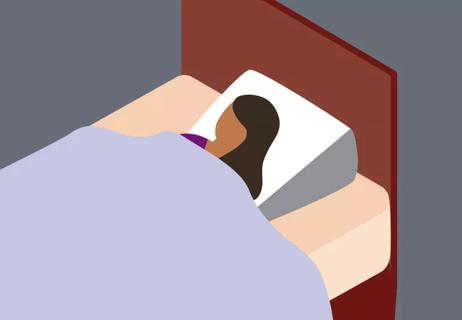While all three are different, they’re also closely related

You feel a burning sensation in the back of your throat. Then, you start to feel it rise into your chest. It’s probably just acid reflux. Or is that heartburn? Wait — are those the same? And what about GERD — could you have that, too?
Advertisement
Cleveland Clinic is a non-profit academic medical center. Advertising on our site helps support our mission. We do not endorse non-Cleveland Clinic products or services. Policy
When you have that unpleasant feeling in your throat, it’s hard to know what the exact cause is. Acid reflux, heartburn and GERD are terms often used together, but they’re not the same thing. But they sometimes come as a package deal.
Gastroenterologist Scott Gabbard, MD, explains the differences between these three digestive woes and shares tips on how to best manage symptoms.
No, heartburn, acid reflux and GERD aren’t the same. But they’re closely connected. Heartburn is a symptom of acid reflux, and GERD is when acid reflux becomes chronic.
All three conditions involve an issue in your esophagus, says Dr. Gabbard. Your esophagus is a muscular tube that runs from your throat through your chest and attaches to your stomach. Its main job? To safely push food down your stomach. Your esophagus opens when you swallow and helps squeeze the food down.
But just like with any part of your body, your esophagus can run into some blockages.
When it comes to these three terms, it’s hard to talk about one without talking about the other. Here’s a simple way to understand how acid reflux, heartburn and GERD are related:
Advertisement
Acid reflux is when stomach acid flows back into your esophagus, which may cause symptoms like chest pain, sore throat, regurgitation and heartburn.
It happens when the valve at the bottom of your esophagus opens when it’s not supposed to. This, in turn, causes the contents of your stomach (acid, digestive juices and/or food) to start moving backward into your esophagus. It causes irritation and discomfort.
Acid reflux may not always cause symptoms, though, Dr. Gabbard points out. “Most people can have up to an hour of reflux per day and not feel it. But if you have problematic reflux, it can cause heartburn.”
There’s a reason you may have mixed up heartburn and acid reflux. It’s because heartburn is, in fact, caused by acid reflux.
Heartburn is a burning sensation you feel in the middle of your chest, right below your sternum. You may notice it especially after meals or at night when you lie down. This sensation can also move up to your throat, creating a sour or bitter taste.
“GERD” stands for “gastroesophageal reflux disease.” This is a chronic condition where you experience consistent acid reflux and have intensified symptoms.
“It’s a more severe form of acid reflux, where the stomach contents flowing back up into the esophagus becomes a problem,” clarifies Dr. Gabbard. That persistent backflow of stomach acid can lead to inflammation, irritation and even damage to your esophagus lining. “It can also cause a cough or the feeling that there’s a lump in the back of your throat,” he adds.
But how do you know if it’s acid reflux or GERD? Dr. Gabbard says that if you’re experiencing acid reflux frequently, typically more than twice a week, it may be a sign of GERD.
Other symptoms of GERD include:
Most of us will experience acid reflux and heartburn in one way or another at some point in our lives. In most cases, you can expect the symptoms to pass easily. But it still doesn’t make the experience any less irritating.
You can relieve symptoms with:
While you may be able to treat acid reflux and heartburn with an antacid or by adjusting your diet, GERD should be treated by a healthcare professional to avoid long-term problems. In some rare cases, surgery is needed.
Often, symptoms of acid reflux and heartburn will come and go without too much bother. But it can still be an unpleasant feeling — so make sure to always listen to your body. If you find that your symptoms of heartburn start to worsen and you begin to notice additional symptoms, you should talk to a healthcare provider.
Advertisement
Advertisement
Learn more about our editorial process.
Advertisement

What’s on your plate, like lean chicken vs. fatty beef, may determine whether you deal with post-meal acid reflux

For some lucky people, these pillows can eliminate the need for medications or surgery

Lifestyle changes such as diet and weight loss or medication such as antacids can bring relief

Jaundice that’s present at birth or lasts more than a week should be evaluated by a pediatrician

Opt for low-FODMAP foods, like grapes, carrots and soy milk, that are easy to digest and help create a balanced gut

It’s not an enema or bowel prep, and this colonic hydrotherapy can harm proper colon function

Family history can increase your risk of developing this autoimmune disorder — you may want to see a healthcare provider for screening

Choose foods that are easily broken down in your digestive system, like fruits and vegetables without skins or seeds

If you’re feeling short of breath, sleep can be tough — propping yourself up or sleeping on your side may help

If you fear the unknown or find yourself needing reassurance often, you may identify with this attachment style

If you’re looking to boost your gut health, it’s better to get fiber from whole foods